In the face of Palestinian attempts to deny the Jewish connection to Jerusalem, Dov Lipman explores how ancient coins and seals prove Jewish historical ties to the holy city and the Temple Mount.
The Israeli-Palestinian conflict has shifted over the last decades from trying to destroy Israel with the help of neighboring Arab armies to the Palestinian leadership and its supporters seeking to delegitimize Israel’s right to exist. A primary focus of this effort has been an attempt to disconnect the Jewish people from having any historical connection to Jerusalem and the Temple Mount. Convincing the world that the Jewish people have no connection to this disputed area further cements the narrative that Israel is an occupying force in this land, and especially in Jerusalem.
This began with a declaration by Yasser Arafat on October 11, 1996, in which he said, “That is not the Western Wall at all, but a Muslim shrine.” (Ma’ariv, Oct. 11, 1996)
This approach continued on November 22, 1997 when the Mufti of Jerusalem, Sheikh Ikrama Sabri, who is the PLO’s senior religious authority for the city and was appointed by Arafat, said: “The Al-Buraq Wall [Western Wall] and its plaza are a Muslim religious property, and the Israeli government’s decisions do not affect it…The Al-Buraq Wall is part of the Al Aqsa Mosque. The Jews have no relation to it.”
Join the fight for Israel’s fair coverage in the news
It seemed to become official Palestinian Authority policy when, on December 10, 1997, the Palestinian Authority’s Ministry of Information issued a statement that “Jews never had any connection to Jerusalem.” They continued and claimed that “there is no tangible evidence of any Jewish traces/remains in the Old City of Jerusalem and its immediate vicinity.”
Related reading: Jewish Ties to the Temple Mount – What’s the Story?
The Palestinian leadership made sure that this narrative was told to the Palestinian people. Palestinian historian Jarid al-Kidwa went on Palestinian Authority Television in June 1997 and proclaimed that “the Jews never lived in ancient Israel. All the events surrounding Kings Saul, David, and Rehoboam occurred in Yemen, and no Hebrew remnants were found in Israel, for a very simple reason – because they were never here.”
Arafat adjusted this claim a bit at the 2000 Camp David negotiations with Israeli and US leaders. According to Dennis Ross, the US envoy to the Middle East, Arafat suggested that there was a Jewish Temple but that it was not in Jerusalem.
Over two decades of Palestinian leaders continuously repeating this message has borne fruit. In May 2017 the United Nations Educational, Scientific and Cultural Organization (UNESCO) declared Israel as “an occupying force” in Jerusalem. The declaration was supported by Russia, China, Brazil, Iran, Malaysia, Mauritius, Nigeria, Senegal, South Africa, Bangladesh, Pakistan, Vietnam, Sweden, Nicaragua and Chad.
The one problem facing the Palestinians and this narrative is that it is outright false. Aside from the fact that the Koran itself unambiguously recognized that God promised the land of Israel to the Jews, archaeological digs have uncovered coins and seals that make it clear that the Jewish people lived in the land of Israel thousands of years ago.
In 1999, just a few years after the Palestinians began telling the world that the Jewish people have no connection to Jerusalem, the Northern Branch of the Islamic Movement conducted illegal renovations of the Temple Mount. They dumped over 9,000 tons of dirt into the nearby Kidron Valley. Recognizing that this “garbage” must contain archaeological artifacts, in 2004, Dr. Gabriel Barkay and Zachi Divra began sifting through the dirt in an initiative which became known as the Temple Mount Sifting Project. Over 200,000 volunteers have helped sift through this debris and hundreds of artifacts proving the Jewish ancient presence in Jerusalem and the Temple Mount have been discovered.
A few examples:
- A weight with the word “beka” on it. The word “beka” appears in Exodus 38:26 where it is described as the weight used to measure the half-shekel which all people donated as part of a census and was used for the maintenance of the Temple. During the First Temple period they did not have shekel coins so the people brought silver pieces which were weighed opposite the Beka weights.
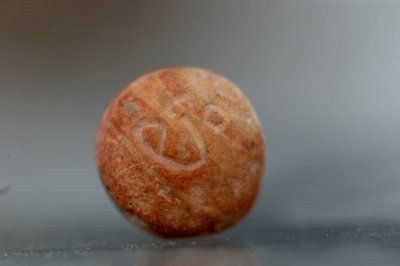
- While there were no shekel coins during the First Temple, they apparently had them during the Second Temple because one of these ancient coins was discovered among the Temple Mount debris. The face of the coin features three pomegranates with the Hebrew words “Holy Jerusalem.” The back side features a cup with the words “half-shekel.” The coin bears scars from a fire, possibly from the fire that destroyed the Second Temple in 70 CE.
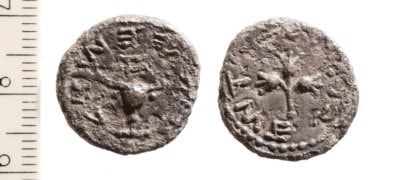
- Seals with the names of two officials – “Juhacal son of Sheleimiah” and “Gedaliah son of Pashur” in the court of King Zedekiah from the First Temple era have been found. Both men are referenced outright in Jeremiah 38:1.
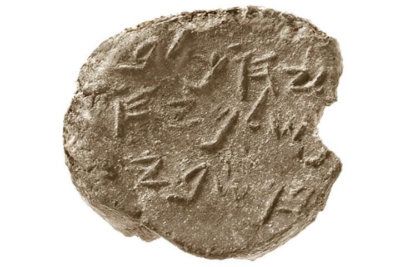
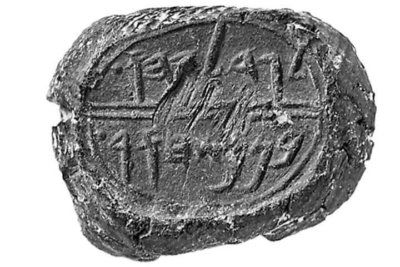
- Seals with Hebrew names dating back to the First Temple era. Large numbers of ancient coins have been found, including names of First Temple era kings such as “Menachem” and Hebrew names common in the era including one – Pinchas – which is still commonly used today.
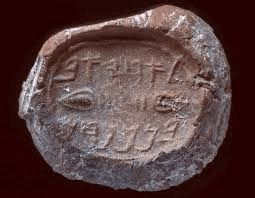
- A coin minted in 69 CE, right before the destruction of the Second Temple with an image of a goblet and the words “for the redemption of Zion” on top. The coin’s backside has an image of the “four species” which Jews use for worship on Tabernacles and the words “year four” referring to the fourth year of the Jews rebelling against the Roman invaders and conquerors. Other ancient coins from years two and three of the rebellion have been found with the words “Freedom for Zion” engraved on them.
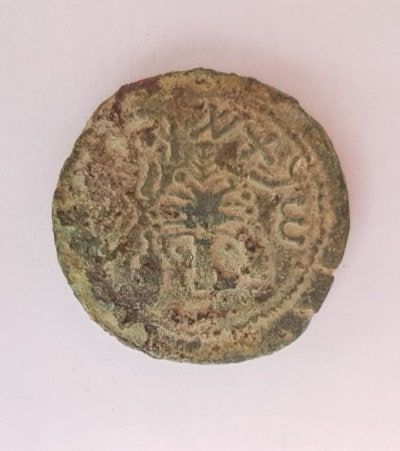
These are just a few examples among hundreds of clear proof that the Hebrew-speaking Jewish people lived in Jerusalem and functioned on the Temple Mount over 2,000 years ago. There are still hundreds of thousands more finds that are waiting to be processed and analyzed in the project’s Jerusalem laboratory. Who knows what further evidence will be found among these artifacts?
The Palestinians can travel the world and spread their lies about the Jews not having a connection to Jerusalem and the Temple Mount all they want. False claims are one thing. Clear archaeological evidence is another. The Jewish people lived in the land of Israel and the stories of the Jewish Temples recorded in the Bible and historical documents now have that archaeological support.
The proof is in the ancient coins and seals.
Dov Lipman was elected to the 19th Knesset in January 2013 and currently serves as Senior Manager – Community Outreach for HonestReporting.

